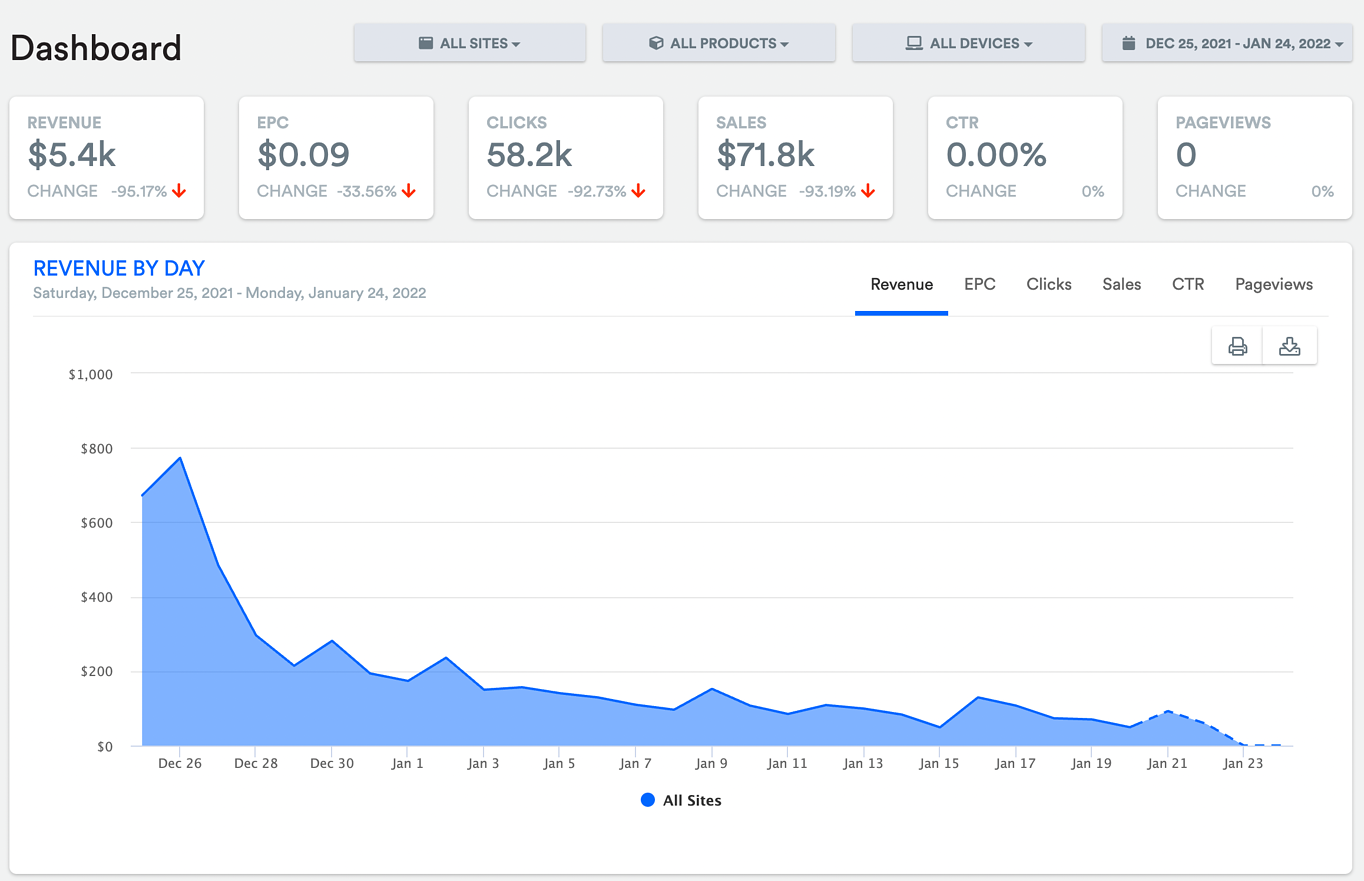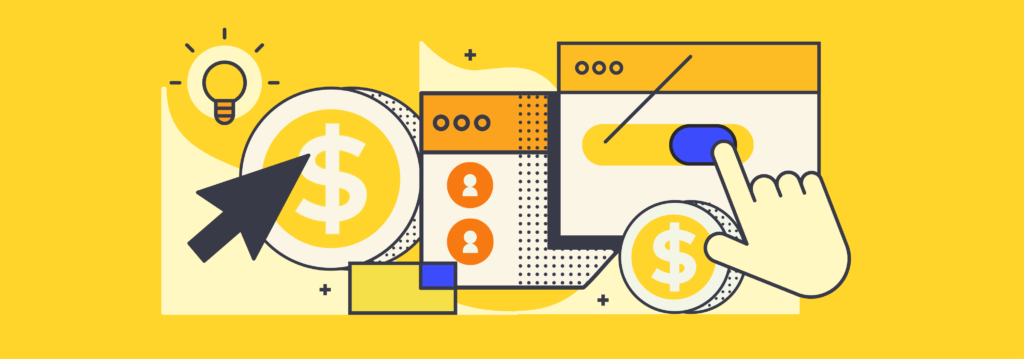EPC stands for “earnings per click.” There are many ways to measure your native advertising efforts, and at Sovrn Commerce we like to focus on EPC. This represents a per-click measure of how efficiently your traffic is earning from advertisers. For a given volume of clicks, the higher your EPC, the higher your revenue.
What’s my EPC?
You can see your EPC in your dashboard. This is the actual calculation of how much you earned per click over a given period of time. Here’s an example from the Sovrn Commerce dashboard, and EPC can be found to the right of the “Revenue” tile.

When you view your EPC, it’s always historical data that’s personal to you. Calculating historical EPC is as simple as dividing your total earnings by total clicks. That way, you’re able to determine how much every click you generated was worth.
Earnings Per Click (EPC) = Total Earnings/Total Clicks
You can calculate your EPC across your entire account, as well as for different sites that you work with to potentially identify trends in merchant spend as they are happening. Here are some questions that you can ask yourself for further affiliate marketing optimization:
- How are your EPC’s on your blog(s)? Are they lower or higher than your social media account(s)?
- What merchant partners are generating the highest EPCs?
EPC vs eEPC
In some places, such as when you visit the Merchant Explorer, the Anywhere tab in the Sovrn dashboard, or our Chrome extension, you’ll see your “Estimated Earnings Per Click,” or eEPC. This number is a prediction of how much you could potentially earn per click, based on network-wide averages across all Sovrn Commerce publishers.
If you’ve interacted with a merchant before, that gives us a better guess for your earnings, and the eEPC you see will consider your own historical performance as well.
Predicting these earnings is tricky. We consider a number of factors, including the item you’ve linked to, the average commission rate of the merchant, and the average likely conversion rate of the shopper.
Remember, the eEPC that you see in the Sovrn Platform is an estimate.
EPC vs. Commission Rate
Many publishers are used to looking only at commission rate and conversion rate when selecting merchants or products to promote. But high commission rates don’t necessarily mean high earnings.
For example, many subscription software companies offer very high commission rates, but unless conversion rates are also high, it’s easy to get blinded by that large percentage and end up seeing no revenue from your links when your readers aren’t buying.
Keep in mind that commission rates are network averages: every merchant that converts well across our whole network might not convert well for your traffic. Similarly, merchants that convert well but offer very low commission rates might not be the best way for you to grow. And with so many CPC (cost-per-click) deals available to Commerce publishers, commission and conversion rates simply don’t tell you the whole story.
Your historical EPC also gives you a straightforward way to compare merchant performance. If, for example, you sent a thousand clicks to a merchant with a high commission rate and a very, very poor user experience that caused every reader to bounce, you’ll see a low EPC. Or perhaps you’ll discover that another merchant you’ve shared a link to enticed more readers than you thought, resulting in higher earnings.
Who should care about EPC?
In short, EPC is a useful metric for every kind of publisher to understand. It’s particularly useful for non-traditional creators or app developers. Whereas a content publisher might also want to understand their RPM, a non-traditional publisher wants to know that when they showcase a retailer on their site or app, they’re as much as possible for every click they generate.
By no means are commission and conversion rates irrelevant metrics. It’s one more tool in your kit, along with other important metrics (such as Sales By Merchant). However, eEPC gives you an easy way to predict your earnings while you’re planning content. For example, if you know that you’ll receive 10k clicks per day, you can very easily do the math to predict overall revenue when you’re linking to a product with a listed eEPC.
Understanding EPC and eEPC will help inform your decision making and your monetization strategies, and gives you a straightforward way to look at your past performance.

